By: Dan Falk
17 Jun, 2016
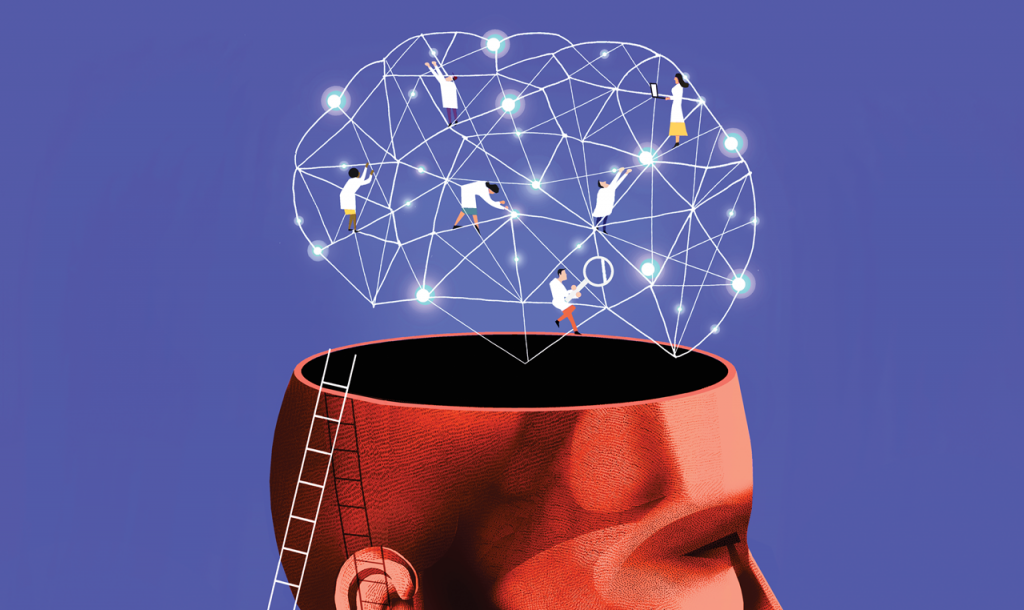
As with jazz, there was never any problem recognizing consciousness when confronted with it – in fact, consciousness seems like the most fundamental aspect of our experience. You wake up – boom! – you’re conscious.
But try for a precise definition and you run into trouble. Does consciousness simply mean being awake? Maybe not; most of us have had the experience of driving somewhere and arriving at our destination with little or no conscious memory of the trip. And then there’s sleep. We lose consciousness when we doze off, yet we’re aware of dreams. Are we conscious then? We’re not even sure if consciousness is all or nothing, or if we can talk meaningfully about levels of consciousness.
And, maybe most perplexing of all: How does consciousness come about in the first place? How do sensory impressions create not just a neural signal for, say, the colour red, but also a sensation of ‘redness’? Why do we have a feeling that it’s ‘like’ something to be ourselves, alive in the world?
Until recently, it wasn’t even clear that consciousness could be a fruitful topic for scientific study. Back in the 17th century, Descartes wondered how physical bodies with physical brains could give rise to seemingly non-physical minds. He concluded that body and mind must be two completely separate things. But even for scientists who rejected Cartesian dualism in favour of physical explanations of the mind, the study of consciousness remained problematic. Science couldn’t find a way to come to grips with a phenomenon that was so subjective.
The tide began to turn in the early 1990s when Francis Crick (of DNA fame) and his colleague, American neuroscientist Christof Koch, started publishing on the subject. Soon afterward came the first scientific conferences dedicated to the study of consciousness, along with the field’s first peer-reviewed journals. Another crucial breakthrough was the development of powerful brain imaging techniques, especially fMRI (functional magnetic resonance imaging), which lets researchers look at brain activity in real time. This gave scientists a tool to examine consciousness that went beyond introspection and verbal reports.
CIFAR’s new Azrieli Program in Brain, Mind & Consciousness is tackling the enigma of conscious experience. The program includes researchers from several branches of science, as well as philosophers – not surprisingly, given the complexity of the problem and the interest it holds across a wide array of disciplines, from psychology and neuroscience to physics and computer science.
“Not only is there a debate about the precise shape of a theory of consciousness, people even disagree about who’s going to provide it,” says Tim Bayne, a senior fellow in the new program and a philosopher who divides his time between Monash University in Australia and Ontario’s Western University.
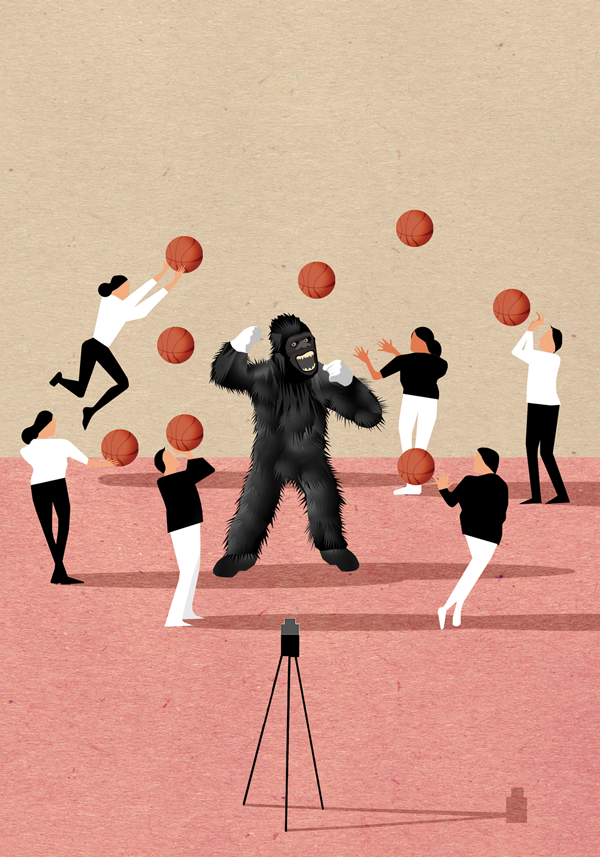
Cognitive science and neuroscience have already provided some insights into the surprising ways consciousness works. Even the seemingly simple act of seeing is a complex act, with much of the processing going on below the level of conscious awareness.
“A lot of cognitive processing is unconscious,” says Bayne. “A lot of cognitive states are unconscious; a certain amount of perception is unconscious. And so people are now looking for an account of consciousness which does justice to that fact.”
Fifteen years ago, a famous case study by researchers at Harvard and the University of Illinois showed how easily we can ‘miss’ what’s right in front of us. People were asked to watch a video of two teams passing basketballs back and forth, and to count how many times the team wearing white shirts passed the ball. But the researchers had a trick up their sleeves – partway through the video, a woman in a gorilla suit walks through the group, pauses, beats her chest, then walks on. Surprisingly, about half of the study subjects failed to see the gorilla. Or rather, they saw it – it registered on their retinas – but their brains failed to raise the signal to the level of conscious experience.
In the gorilla-video study, the subjects were healthy. But people with certain types of brain damage are also unable to ‘see’ what’s in plain view. Ivey Fellow Mel Goodale, co-director of the program and a neuroscientist at Western University, has spent much of his career examining the interplay between different kinds of visual processing and consciousness. A crucial moment came when Goodale was put in contact with a woman known as ‘DF.’ Exposure to carbon monoxide had left DF with brain damage and impaired vision; she could no longer make out shapes. If Goodale held out a pencil, DF couldn’t identify it as such, or tell if it was pointing up and down or side to side. But when she reached out to grab it, her hand oriented itself correctly – every time. “Her hand ‘knew’ the orientation of the pencil, even though she didn’t,” Goodale says.
After more tests with other subjects, Goodale began to understand that the brain has at least two distinct ways of handling visual information. One pathway, known as the ventral stream, is responsible for our visual experience of the world. The other, known as the dorsal stream, is responsible for visual control of limbs and fingers. (The two streams are named for the physical routes they take through the brain.) In DF’s case, the ventral stream was impaired – a scan would confirm a lesion – while the dorsal stream was still able to function. Later, Goodale tested patients who had the opposite kind of impairment; they could describe an object, but struggled to pick it up under visual guidance.
What does this tell us about consciousness? To start with, it shows that different brain systems make very different contributions to conscious awareness. The ventral stream is essential for visual perception, but not for the visual control of fine hand movements. The dorsal stream is vital for visuomotor control, but not for the conscious perception of objects. It could be said that the former stream tracks how we represent
the world in our minds – our mental picture of things – while the latter co-ordinates our movements, based on visual data, whether or not that data is rendered conscious.
There is still much to be learned about the not-so-simple act of seeing, and matters are complicated by a number of common misconceptions. For example, it’s tempting to compare the human eye to a camera, with the retina standing in for the film or digital chip. But the two systems are actually quite different.
“It’s not a picture; it’s not even a video,” says Goodale. “It can’t be something that’s ‘displayed’ in our head, because who’s looking at the picture?” (The old idea of a homunculus – a figurative ‘little man’ – in the brain is obviouslyproblematic; after all, who would be viewing the picture in his brain? An infinite regress is inevitable – and not very helpful.)
Neuroscience has made progress, Goodale says, but “how the brain delivers up this experience that we call vision is still a great mystery. We’d like to know how the brain actually ends up delivering the experience of that colour, or that shape. We don’t have a handle on that yet. You might say that’s the raison d’être for the Brain, Mind & Consciousness program at CIFAR. These are hard questions to grapple with, but they’re questions we shouldn’t shy away from.”
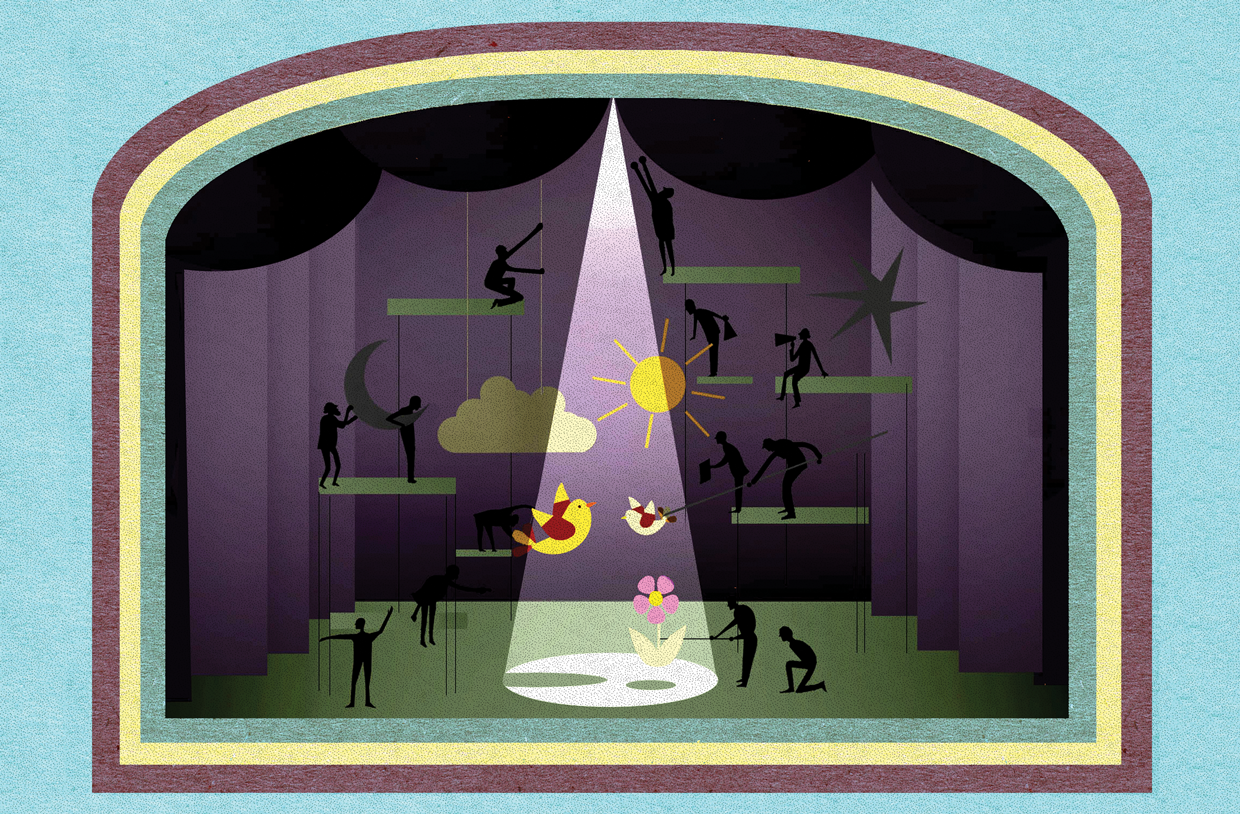
Clearly, the human brain is a busy place. Signals flow in many directions at once; different brain regions are called on to perform different functions, sharing information in some situations and keeping it ‘local’ in others. The crucial point is that not all of the information produces conscious experience. Most of it seems to pass under the radar, with only a small portion rising to the level of conscious awareness. Science wants to know which bits of information rise to this level – and why.
In the late 1980s, American neuroscientist Bernard Baars put forward an idea called global workspace theory, which aims to answer this question, and also to explain how conscious and unconscious brain processes relate to one another.
The theory’s central metaphor is a theatre: the mind a darkened stage with only a small area in the spotlight at any one time. (The “spotlight of selective attention,” Baars called it.) Countless brain processes – equivalent to the playwright, director and so on – play a crucial role in determining what gets illuminated, though they themselves remain in darkness. According to the theory, any information that is successfully shared across multiple brain regions has to be stored in memory long enough for the sharing to take place, and has to be made ‘globally available.’ Certain bits of information – those that are the most salient and useful – make their way into the spotlight.
To its proponents, the theory seems to illuminate the ‘self’ – the singular ‘I’ that emerges from the underlying chaos of information flow. What the spotlight picks out, according to Baars, is the mental space “in which we carry on the narrative of our lives.”
“Any information that is successfully shared across multiple brain regions has to be stored in memory long enough for this sharing to take place.”
Senior Fellow Stanislas Dehaene, a neuroscientist at the Collège de France, read about Baars’s work and was deeply influenced. Dehaene has devoted much of his career to determining how the brain shares and stabilizes information across multiple regions – and why only some of this requires consciousness.
“Consciousness is a selective system,” he says. “Out of the thousands of processing streams that are occurring at a given moment, it selects one of them and it amplifies this information so that it becomes the focus of our conscious thoughts.”
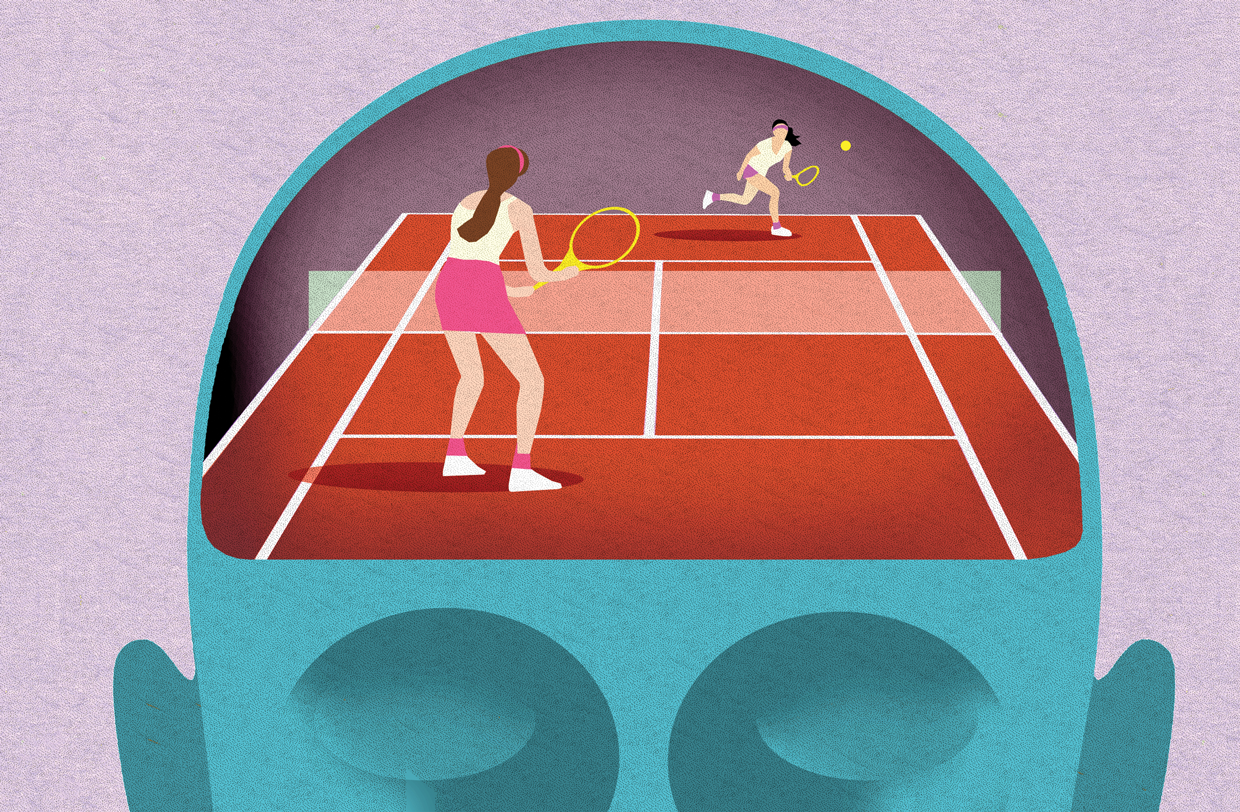
For most of us, consciousness is like an invisible friend – a companion who follows us around from the time we wake up in the morning to the moment we go to sleep. But for people with certain kinds of brain damage, that companion seems absent, or nearly so. In the neurology literature, such people are said to be in a ‘vegetative state.’ This is not quite the same as being in a coma, explains neuroscientist Adrian Owen, the other co-director of the program and the CIFAR Koerner Fellow. Coma patients are completely unresponsive and appear as though asleep. Vegetative patients have sleep-wake cycles, can make occasional movements and can yawn and sneeze. But they don’t respond to verbal commands. As Owen puts it, they appear to be “awake but unaware.” (‘Minimally conscious’ patients have a slightly higher level of awareness and may occasionally be able to respond to commands.)
Owen, who came from the University of Cambridge in 2010 to take up a Canada Excellence Research Chair at Western, spent his early career using brain imaging to study Parkinson’s patients. Then, in 1997, he heard about a 26-year-old woman who was left in a vegetative state after a viral infection. Owen put her in a brain scanner, and showed her pictures of faces, both familiar and not. When she saw a familiar face, the part of her brain known as the ‘fusiform face area’ lit up – just as it does in healthy subjects. The woman improved over time, and can now get around in a wheelchair.
A few years later, Owen had another breakthrough. Once again the subject was in a vegetative state – a woman who had been unresponsive since a traffic accident five months earlier. Again, Owen used a brain scanner. He asked the woman to imagine playing tennis, and then to imagine walking through her house. When healthy subjects imagine playing tennis, they show activation of a brain area called the supplementary motor area. And when they think about tasks that involve spatial navigation, like walking from room to room, they use a region called the parahippocampal gyrus, near the centre of the brain.
Remarkably, Owen’s subject showed the same response as healthy subjects do. Soon Owen was using the technique to allow patients like her to communicate – tennis for yes, house-navigation for no. It was painfully slow, but it worked (and made headlines around the world). Owen estimates that as many as one in five vegetative patients has some level of awareness, and would be able to communicate through the ‘playing tennis’ technique.
“I don’t think we understand everything about every level of consciousness, but we do know that there are some vegetative patients who are entirely conscious.”
“I don’t think we understand everything about every level of consciousness,” he says. “But we do know that there are some patients diagnosed as vegetative who are entirely conscious. They’re very aware of who they are, where they are, how long they’ve been there, what has happened to them in their lives.”
Aside from having real-life implications for brain-injured patients, Owen’s work serves as an interesting contrast to that of Dehaene, whom Owen describes as taking a “top-down” approach to consciousness, in contrast to his own “bottom-up” approach. Rather than trying to construct a top-down theory of how consciousness works, Owen is trying to zoom in on its most essential features – what actually has to be happening in the brain for consciousness to arise.
In the end, the top-down and bottom-up approaches may prove complementary.
Consider the workings of an orchestra. You need the conductor to oversee the whole affair, to make sure everything is in synch. But you also need the individual musicians to produce the notes. Neither job is more important than the other.
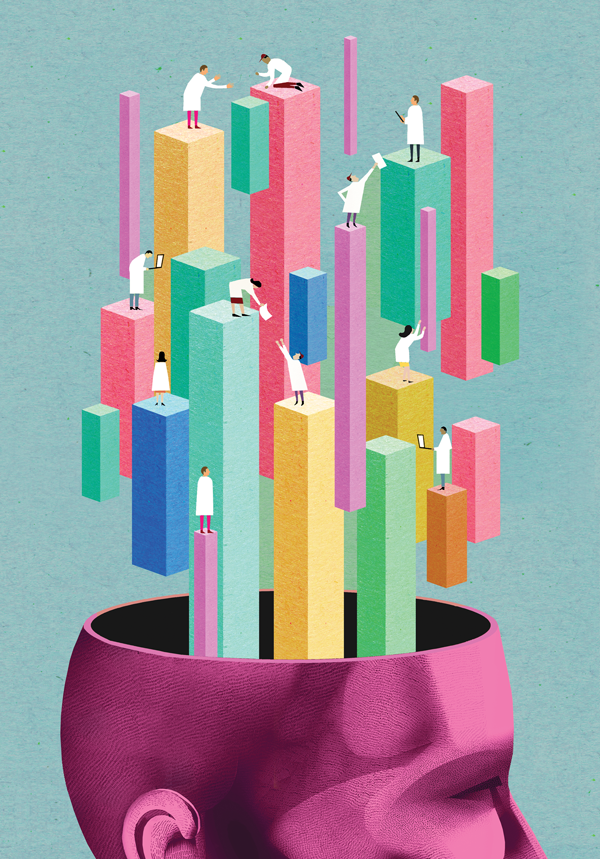
One major puzzle remains unsolved: How do neural processes, however complex they may be, yield the subjective feeling of being conscious? Why should neural activity feel like anything at all? This puzzle received renewed attention in the mid-1990s, when philosopher David Chalmers dubbed it the ‘hard problem’ of consciousness. He distinguished it from the easy (or at least easier) problems of linking certain neural processes to certain kinds of perception – the type of bottom-up work to which scientists like Owen and Goodale are contributing. Bayne, the Monash/Western philosopher, says he sometimes sympathizes with this skeptical ‘hard problem’ view – that there really is a deep explanatory gap, one that won’t go away no matter how much understanding we gain of neural processes. Both Dehaene and Owen, on the other hand, say they’re more inclined to the opposite view – that once we understand the neural processes which underlie consciousness, there won’t be any mystery left.
“I’m not a great believer in the hard problem.” Dehaene says. The current approach of cognitive neuroscience – attempting to build a theory of consciousness based on computational models of brain activity, and on the numerous ‘easy problems’ that researchers have begun to illuminate – might be enough to explain the mind.
This view has been championed by others, including Tufts University philosopher Daniel Dennett, an advisor to the program.
Adrian Owen is in full agreement: “I think if we can truly understand how the brain works, any ‘hard problem’ will just disappear.” Consciousness, he suspects, “will just be something that the brain produces – just a product of the extremely complex organ that we have in our heads.”
Much work remains, though, even if the hard problem isn’t an insurmountable obstacle. For one thing, the so-called easy problems are extraordinarily daunting, as scientists struggle to discern the detailed workings of sensory perception, memory, language, emotion and more. Then there are the puzzles associated with the brain’s ability to integrate all of this neural processing, producing a unified ‘self’ from the multitude of neuronal traffic.
“As a neuroscientist, the only place I can begin is studying solvable problems,” says Mel Goodale. “But that’s how scientific progress works. And that’s that’s how we’ll make progress on solving consciousness.”